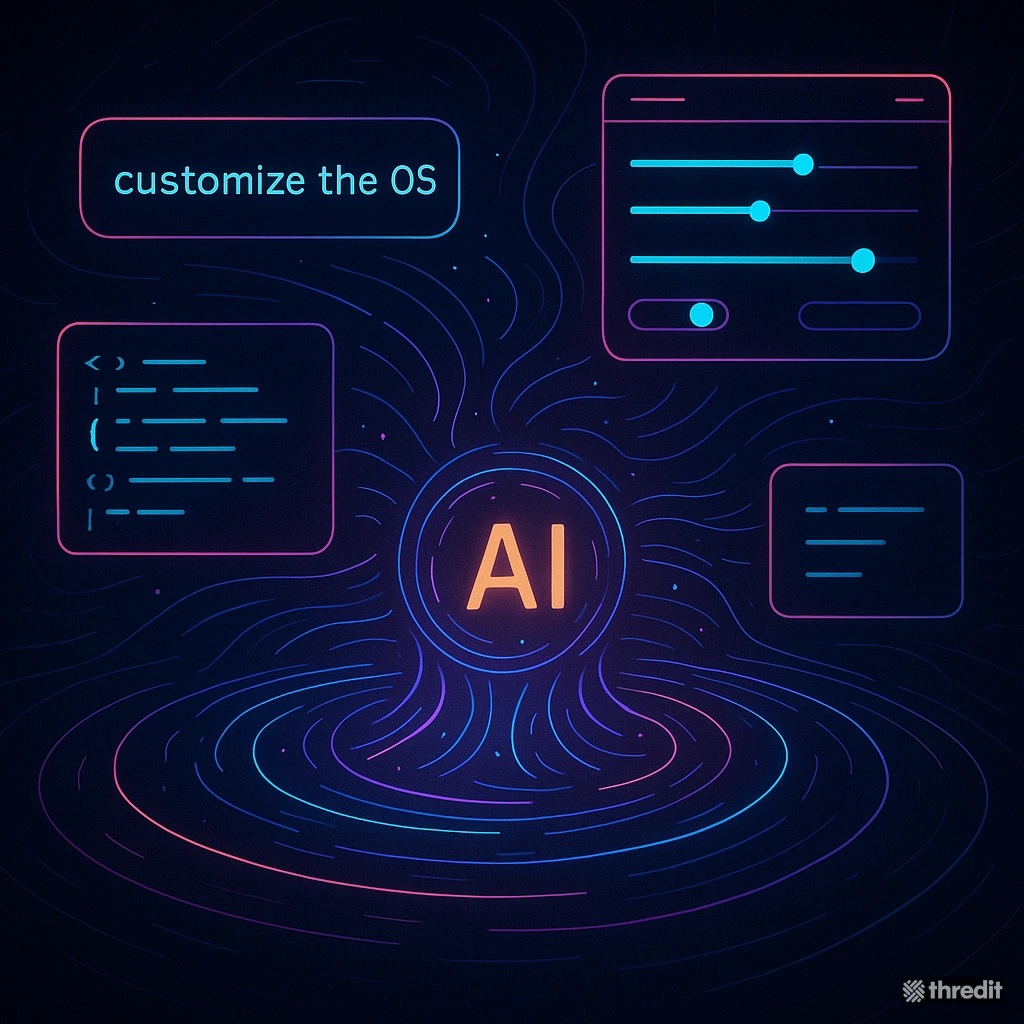I’ve been tinkering with Linux since the mid-90s, starting with a Slackware DVD and the painstaking process of installing, and reinstalling, and reinstalling again. 💿 For decades, the promise of a truly custom computing environment has been a siren song for developers like me, offering total control at the cost of a steep, often frustrating, learning curve. The power to build a digital workspace that molds to your workflow is immense, but the time and expertise required to configure everything from window managers to system services has kept it a niche pursuit. That era is coming to an end.
We are on the cusp of a new paradigm, where the complexity of system configuration is abstracted away by artificial intelligence. My recent experience building a new desktop environment from the ground up showed me a future where natural language, not arcane configuration files, is the primary tool for customization. By pairing a modern, aesthetically-focused tiling window manager called Hyprland with an AI assistant, I was able to build a completely bespoke environment in a fraction of the time it would have taken just a few years ago.
The Old Way: A High-Friction Affair
For years, customizing a Linux system was a labor of love. It meant wrestling with Sendmail to configure email, learning esoteric scripting languages to tweak a window manager, and spending hours troubleshooting why a particular component wasn’t working. Every open-source project has its own philosophy on configuration—some use JSON, others YAML, some embed Lua—creating a fragmented and challenging landscape for even experienced users. The result was that most people, including myself, would often stop short of deep customization. It was simply easier to adapt to the software’s defaults than to bend the software to our will.
The New Way: AI as a Configuration Partner
My latest setup revolves around Hyprland, a dynamic tiling window manager that combines the efficiency of traditional tiling with modern aesthetics and animations. What made this installation different was the integration of an AI assistant that had access to my configuration files. Problems that would have previously sent me down a rabbit hole of forums and documentation were solved in minutes. For example:
- When a UI widget wasn’t displaying correctly on my high-resolution monitor, I described the problem to the AI, and it fixed the configuration.
- When the UI looked pixelated, I told the AI it didn’t seem to be using Wayland correctly, and it corrected the startup process.
- When copy-and-paste wasn’t working between my AI sidebar and other applications, the AI helped me diagnose and resolve the issue.
This experience fundamentally changes the dynamic between the user and the system. The barrier to entry for meaningful customization plummets when you can simply state your intent.
It was easier for me to adapt myself to the environment than it was to change the environment to suit me. That’s a very important idea. But now, because I can do this with my voice and my words and my language, this Linux install is unlike any I’ve ever gone through in the past. Because I can be uncompromising. If I don’t like key bindings, I can change them. If I don’t like copy paste behavior, I don’t have to live with it.
The Future is Hyper-Personal and Ephemeral
This new reality has profound implications. As AI makes software easier to build and modify, the value of any single instance of software decreases. Code becomes less of a static, defensible product and more like a temporary, malleable configuration. We’re moving toward a world where your computing environment is built for an audience of one: you.
The configuration files I created for my setup are stored in Git, but they aren’t really meant to be shared. They are a byproduct of my collaboration with an AI to suit my specific needs. This points to a future where we don’t just use apps, but we evolve them. Imagine a “general computational device” that starts as a blank slate and builds itself around your habits and requests, a true collaboration between the user and the machine. We are leaving the world of the default user behind and entering an era where our digital tools can be as unique as we are.
